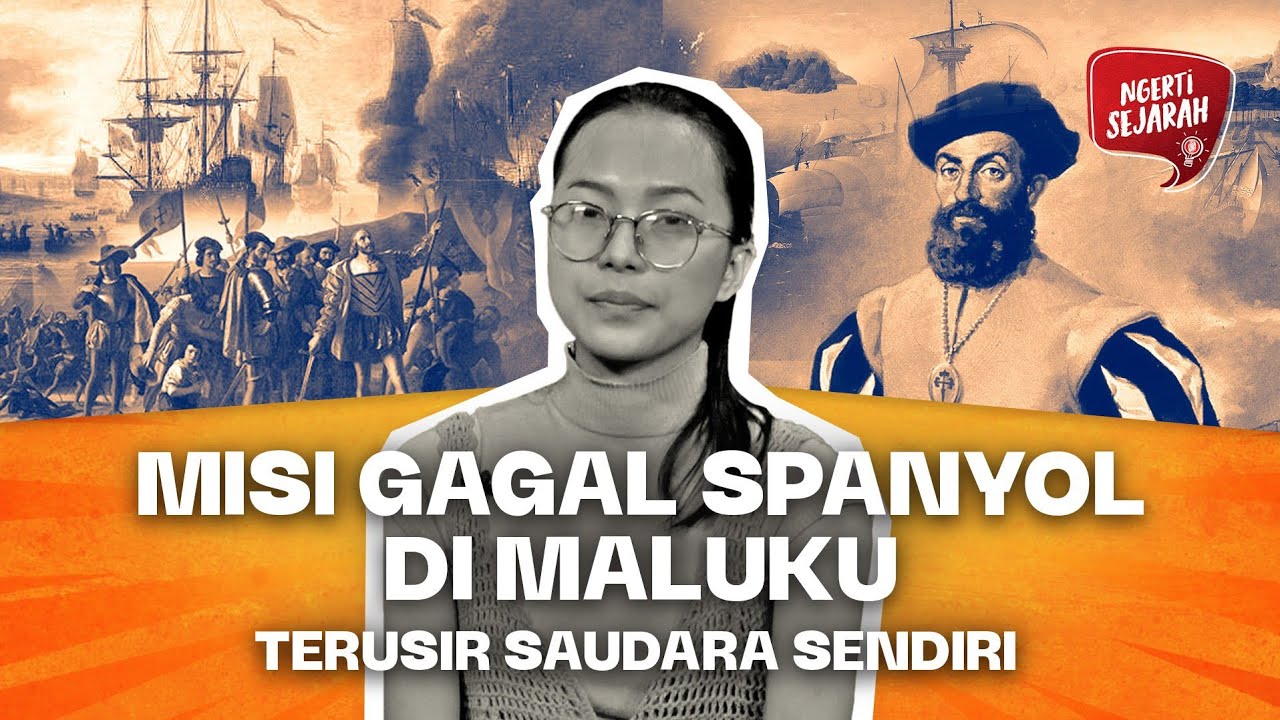PENJELAJAHAN PORTUGIS MENCAPAI KEPULAUAN NUSANTARA
Summary
TLDRThis video explores the Portuguese exploration to the Indonesian archipelago in search of spices. It begins with Bartolomeu Dias's 1487 voyage to find a trade route around Africa, followed by Vasco da Gama's successful journey to India in 1498. Realizing India was not the spice source they sought, the Portuguese extended their exploration eastward. They arrived in Malacca in 1511, establishing control through conquest. Finally, they reached the Maluku Islands in 1512, forming alliances and securing a monopoly on the lucrative spice trade, solidifying their influence in Southeast Asia. The video concludes with a promise to discuss the Portuguese monopoly in the region in a future episode.
Takeaways
- 🌍 The Portuguese were the first European nation to set foot in the Nusantara region, aiming to establish trade routes and acquire valuable spices.
- ⛵️ Bartholomeu Dias's expedition in 1487 was commissioned by King John II of Portugal to find a trade route to the southern tip of Africa.
- 📜 During his voyage, Dias and his crew faced challenges such as storms and food shortages, leading them to eventually turn back, naming the Cape of Good Hope.
- 🗺 Vasco Da Gama continued the exploration in 1497, successfully reaching India by sailing around Africa, avoiding Muslim-controlled trade routes in the Red Sea.
- ⚓️ The Portuguese established trade routes and built fortresses along the way, including in India and the East African coast.
- 🏰 Afonso de Albuquerque expanded Portuguese influence by conquering Goa in 1510, solidifying their presence in India.
- 🛡 After learning that India wasn’t the main source of spices, the Portuguese turned eastward, leading to their eventual arrival in Malacca in 1511.
- 🤝 Initially welcomed by Malacca’s Sultan, the Portuguese later faced resistance after Muslim traders warned the Sultan of the Portuguese threat.
- ⚔️ In 1511, Albuquerque led a successful military campaign, capturing Malacca and securing Portuguese control over the spice trade in the region.
- 🌶 The Portuguese later expanded further east to the Moluccas, the famed 'Spice Islands,' where they formed alliances with local rulers, such as the Sultan of Ternate, to secure valuable spices.
Q & A
Who led the first Portuguese expedition to explore a new trade route in 1487?
-The first Portuguese expedition in 1487 was led by Bartholomeu Dias, who was tasked by King John II to find a trade route to the southern tip of Africa.
What was the significance of the Cape of Good Hope in the Portuguese exploration?
-The Cape of Good Hope, originally named the Cape of Storms by Dias, was significant because it represented the point where Portuguese explorers opened a route to the east. King John II later renamed it Cape of Good Hope, symbolizing optimism for reaching the Indian Ocean.
How did Vasco da Gama contribute to the Portuguese exploration efforts?
-Vasco da Gama led a successful expedition in 1497-1498 that followed Dias' route, eventually reaching Calicut, India, where he established trade connections, marking a key milestone in Portugal's search for spice trade routes.
What was the role of Alfonso de Albuquerque in the Portuguese expansion?
-Alfonso de Albuquerque played a key role in the Portuguese expansion by leading military campaigns, including the conquest of Goa in 1510, which secured Portugal's position in India and strengthened its control over spice trade routes.
Why was Malacca important to the Portuguese, and what happened there?
-Malacca was a crucial trading hub for spices, and Portuguese forces, led by Albuquerque, captured it in 1511 after conflicts with local sultanates. This allowed Portugal to monopolize the spice trade and control the Malacca Strait.
What was the relationship between the Portuguese and the Sultanate of Ternate in Maluku?
-The Portuguese were welcomed by the Sultanate of Ternate because they bought spices at higher-than-normal prices and had military strength, making them valuable allies during conflicts with the Sultanate of Tidore.
How did the Portuguese handle Islamic traders in their exploration of the East?
-The Portuguese actively avoided the Muslim-controlled trade routes in the Red Sea and formed strategies to bypass Muslim traders, relying on favorable winds to sail directly across the Indian Ocean.
What prompted the Portuguese to seek out the Spice Islands in Maluku?
-After realizing that India was not the primary source of spices, Portuguese explorers, informed by traders in Malacca, began to seek the Spice Islands of Maluku, which were famous for their abundant spice production.
Who led the Portuguese expedition to the Maluku Islands, and what were the results?
-The Portuguese expedition to the Maluku Islands in 1512 was led by Antonio da Abreu and Francisco Serrão. The expedition resulted in the Portuguese establishing trade relations and building alliances with local rulers, particularly in Ternate.
What challenges did the Portuguese face during their exploration and conquest of the East?
-The Portuguese faced numerous challenges, including difficult weather conditions, resistance from local powers like the Sultanate of Malacca, and conflicts with established Muslim traders who viewed Portugal as a threat to their dominance in the spice trade.
Outlines

このセクションは有料ユーザー限定です。 アクセスするには、アップグレードをお願いします。
今すぐアップグレードMindmap

このセクションは有料ユーザー限定です。 アクセスするには、アップグレードをお願いします。
今すぐアップグレードKeywords

このセクションは有料ユーザー限定です。 アクセスするには、アップグレードをお願いします。
今すぐアップグレードHighlights

このセクションは有料ユーザー限定です。 アクセスするには、アップグレードをお願いします。
今すぐアップグレードTranscripts

このセクションは有料ユーザー限定です。 アクセスするには、アップグレードをお願いします。
今すぐアップグレード関連動画をさらに表示

Kedatangan Bangsa Portugis ke Indonesia | HISTORIA.ID

Kedatangan Bangsa Spanyol ke Indonesia | HISTORIA.ID

Perlawanan Bangsa Indonesia Terhadap Bangsa Portugis | Sejarah Indonesia

MENGAPA BANGSA EROPA DULU MEMBURU REMPAH-REMPAH?

kenapa Eropa menjajah? salah satunya karena penaklukan Konstantinopel

PENJELAJAHAN SAMUDERA -- TOKOH SERTA RUTE PELAYARAN (PORTUGIS DAN SPANYOL)
5.0 / 5 (0 votes)
